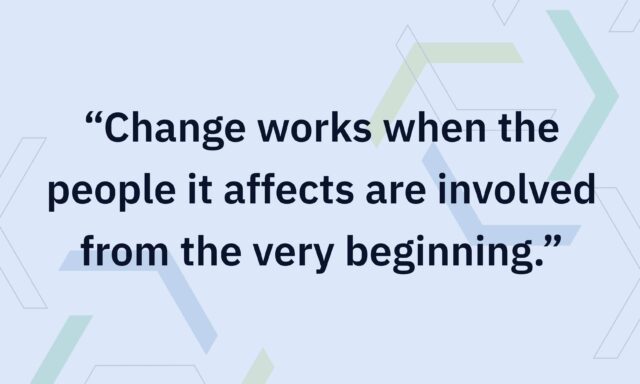
With children and young people’s mental health services (CAMHS) entering one of the most challenging periods in its history, we explore how Alder Hey Children’s NHS Foundation Trust is responding through digital transformation of its Mental Health Act processes.
In 2023/24, 910,567 young people were referred to CAMHS, with 64% not receiving treatment within four weeks. The average wait after being referred to mental health services was 392 days. Presentations are becoming more complex and beginning at younger ages, with around one in five children and young people aged 8 to 25 now having a mental health difficulty.
The wider system continues to feel the effects of pandemic-era disruption, increased social need and long-standing workforce pressures. In 2023/24, 78,577 young people referred to CAMHS waited over a year for treatment, an increase of over 52% on the previous year. Of these, 34,191 waited more than two years. At the end of September 2024, there were 352,682 children and young people under 18 waiting for a first contact with NHS-funded mental health services, with one in ten of those waiting for more than two years.
Against this backdrop, the hospitals providing both acute and community mental health care have an increasingly pivotal role. Alder Hey Children’s NHS Foundation Trust, one of Europe’s largest paediatric hospitals, sits as a core part of this picture.
Each year it cares for more than 270,000 children and young people across emergency care, medical and surgical specialties, research-led services and a large CAMHS provision that spans Merseyside and surrounding regions. As one of the few acute hospitals to have inpatient and community CAMHS facilities co-located on the same estate, the Trust has built an integrated model that enables closer collaboration between physical and mental health teams.
A model built on early intervention and whole-person care
This integrated approach allows clinicians to identify mental health needs earlier in a child’s journey, reducing the risk of long admissions and helping keep young people closer to home. The close proximity of services also supports shared learning and a more consistent experience for families who may already be navigating stressful or unpredictable circumstances.
Alder Hey’s wider strategy leans heavily on this principle. The Trust’s long-term digital and service transformation programme, known as Bring Me the Future, places emphasis on tools and pathways that make care safer, more accessible and more supported for children and families. The digitisation of Mental Health Act (MHA) processes through eMHA by Thalamos aligns with this direction by replacing fragmented, paper-based workflows with a secure, joined-up digital pathway.
Why digitising the Mental Health Act matters for children
Detentions under the MHA in CAMHS are comparatively rare, but when they do occur they tend to be urgent, sensitive and high risk. In a system where workforce pressures are acute (CAMHS has faced the highest consultant vacancy rate of any psychiatric specialism, with one in five consultant psychiatrist posts vacant and a total vacancy rate of more than one in three when including locum-covered posts) reducing avoidable administrative burden becomes essential.
By digitalising the documentation and information flows supporting these assessments, Alder Hey is helping ensure that professionals have the clarity and accuracy they need during fast-moving situations. Digital MHA processes reduce administrative errors, speed up communication between organisations and provide a clear audit trail for governance and safeguarding. This enables overstretched teams to focus more time on direct clinical care rather than navigating paper-based processes.
The decision also brings Alder Hey into the same digital network as neighbouring providers, including Mersey Care NHS Foundation Trust and Cheshire and Wirral Partnership NHS Foundation Trust. For the region, this creates a more consistent, shared approach to crisis mental health care for adults and children alike. For the teams involved in children’s care, it ensures that information is available quickly and securely when needed most.
Arden Tomison, CEO of Thalamos, believes this consistency is one of the most impactful aspects of the partnership. “One of the lessons from other Thalamos regional programmes like the OneLondon eMHA programme is that digital consistency makes care safer,” he said. “What Alder Hey is doing is making sure that children and young people benefit from the same level of clarity and coordination that adults already receive across the region. It shows real leadership at a time when CAMHS services are under pressure and looking for ways to strengthen the foundations of care.”
Co-production as a core design principle
Alder Hey’s wider digital improvements are shaped heavily by co-production. The Trust has a large and active Youth Forum that influences everything from service design to communication style. Their feedback has repeatedly highlighted the need for digital convenience to sit alongside human connection rather than replace it. This insight reflects national research showing that while young people value accessible digital tools, many still prefer face-to-face interactions for sensitive or crisis-based care.
Thalamos Chief Client Officer, Zoe Seager, sees this approach as one of Alder Hey’s defining strengths. “The way Alder Hey involves young people is more than consultation. It is meaningful co-design,” she said. “The Youth Forum’s influence is visible across their thinking. That is incredibly important in mental health care, where the experience of the child or adolescent must shape the entire pathway.”
The legal and rights-based landscape
The forthcoming Mental Health Bill, expected to modernise and strengthen rights under the MHA, places significant emphasis on least-restrictive practice, patient voice and increased transparency. Although the Bill is still progressing and nearing Royal Assent, many of its core ambitions align with longstanding CAMHS priorities.
Digitisation supports these ambitions by reducing avoidable delays, ensuring that documentation is complete and legible, and helping clinicians spend more time with the child rather than completing forms. Analysis repeatedly shows that administrative errors and documentation inconsistencies can lead to delays in treatment or unnecessary extensions to detention. Digital workflows help reduce administrative risks and provide clearer oversight.
Tomison sees this alignment as a critical step forward. “Policy only translates into real change when the right infrastructure is in place,” he commented. “Digital MHA processes help support the principles of the Mental Health Bill in very practical ways. They create the clarity that children, families and clinicians deserve.”
A system under strain, and a Trust adapting with clarity
The pressures facing CAMHS are structural and significant. From 2017 to 2023, rates of probable mental disorder in children aged 5-16 years rose from one in nine to one in five. Young people aged 17-19 have seen particularly sharp increases, with rates rising from one in ten in 2017 to one in four in 2022. In 2023, the prevalence of eating disorders was highest in 17-19 year olds at 12.5 percent. Workforce challenges compound the demand pressure. Too many children experience a deterioration in their mental health while on waiting lists, and the average wait after referral now stands at over a year. In 2023/24, 171,134 young people had their referral closed before accessing support.
Against this backdrop, the need for services that are responsive, joined up and digitally supported has never been greater. Alder Hey’s approach reflects this wider national need. Its integrated estate, strong co-production culture and investment in digital tools position it to respond to challenges with clarity and purpose. Going live with eMHA by Thalamos is only one part of a broader transformation, but it addresses a high-stakes corner of care where administrative reliability and cross-organisational communication are essential.
Tomison believes this is where the partnership’s impact becomes most meaningful. “What Alder Hey is doing shows that thoughtful digital design can strengthen the entire care pathway,” he said. “When processes are safer and clearer, clinicians have more time to focus on the child or young person in front of them. That is the real value of digitisation.”
Looking ahead
The coming years will bring further changes to children’s mental health services. Demand will continue to grow, legislative reform will reshape expectations, and the relationship between digital and face-to-face care will keep evolving. Alder Hey’s decision to digitise the Mental Health Act is an early demonstration of how children’s hospitals can adapt to this shifting landscape while staying anchored to their core purpose: delivering care that is safe, compassionate and centred on the young person.
Seager summarises it simply. “Alder Hey have approached this with clarity and as part of a wider strategy. They are showing what it looks like to modernise without losing sight of the child. That is exactly the kind of progress we should all want to see.”
Statistics sources:


